Have you thought about the health and beauty of the trees around your home lately? Professional tree care services in California do more than just basic upkeep. They offer specialized skills that can greatly improve your landscape’s look and life span. It’s important to know the different services available, like expert tree trimming and the detailed checks by certified arborists. This knowledge helps keep your trees healthy and boosts your property’s value.
In this article, we’ll look at the services offered by tree care experts. We’ll focus on why expert tree care is key for tree health and landscape beauty. Our goal is to give you the information you need to make smart choices about your trees.
Key Takeaways
- Professional tree care services include many important tasks.
- Expert tree care is crucial for trees to live longer and increase property value.
- Certified arborists are essential in finding and fixing tree health problems.
- Regular tree trimming helps with looks and safety.
- Knowing about tree care options helps you make better choices.
Overview of Professional Tree Care Services
Getting professional tree care is key to keeping your landscape healthy and looking good. In California, you can find many services to help your trees thrive. These include regular upkeep, precise trimming, effective pruning, and detailed health checks.
Here’s a breakdown of the key services included in professional tree care:
- Tree Maintenance: Regular monitoring and care to promote healthy growth.
- Tree Trimming: Removing excess growth to enhance appearance and safety.
- Tree Pruning: Selectively cutting branches to improve structure and flowering.
- Health Assessments: Evaluating trees for diseases, pests, and overall health.
Using these three treatments helps property owners tackle specific issues. It ensures their green spaces stay beautiful and safe for a long time. Investing in professional tree care boosts your environment and property value.
Importance of Tree Maintenance
Tree maintenance is key for our landscapes, both for looks and safety. It keeps trees healthy and strong, avoiding damage from sick or broken limbs. This care makes your property safer and more beautiful, boosting its value.
Benefits of Regular Maintenance
Regular upkeep brings many benefits, such as:
- Promoting healthy growth and vibrancy.
- Reducing the chances of accidents caused by falling branches.
- Improving air quality and providing shade.
- Enhancing the overall landscape design.
How Tree Maintenance Enhances Property Value
Tree care greatly increases your property’s value. Well-kept trees attract more buyers and can lead to higher sale prices. They make your home look welcoming and unique, setting it apart in the market.
| Benefit | Impact on Property Value |
|---|---|
| Healthy trees promote a vibrant landscape | Increased home appeal leading to higher offers |
| Reduced risk of liability from falling branches | Buyers appreciate lower safety concerns |
| Improved energy efficiency from shade | Attractive savings can entice buyers |
Tree Trimming: Enhancing Aesthetics and Safety
Tree trimming has two main purposes: it makes your yard look better and keeps it safe. Regularly trimming trees can make your landscape more appealing, and it also helps keep your property safe by preventing branches from falling.
When to Trim Your Trees
Knowing when to trim your trees is key for their health and look. The best time to trim is in late winter or early spring. This way, you get a clean cut and don’t stress the tree too much.
You can also remove dead or damaged branches at any time. This keeps your property safe and makes it look better.
Techniques Used in Tree Trimming
There are many ways to trim trees for the best results. Knowing these techniques helps you take care of your trees. Here are a few:
- Crown Thinning: This method removes certain branches to let more air and light in. It helps your tree grow better and look nicer.
- Crown Reduction: This reduces a tree’s height or spread. It keeps the tree strong and safe.
- Deadwooding: Taking out dead or rotting branches makes your trees look better and safer. It prevents branches from falling.
Using these techniques helps you keep your trees healthy and beautiful. It also makes your surroundings safer.
Tree Removal: When and Why It’s Necessary
Removing a tree might seem extreme, but sometimes it’s the only choice. Knowing when to remove a tree can help keep your property safe. Trees with diseases, pests, or decay are at risk of causing harm.
Ignoring these problems can lead to serious issues. This is especially true if trees are near buildings or roads.
Potential risks of not removing a damaged tree include:
- Increased likelihood of falling branches.
- Damage to nearby buildings or vehicles.
- Threats to personal safety from unstable trees.
To understand when tree removal is needed, look at this table:
| Condition | Description | Recommended Action |
|---|---|---|
| Severe Decay | Decayed wood reduces structural integrity. | Immediate tree removal is advised. |
| Pest Infestation | Infestations can weaken and compromise tree health. | Removal may be necessary to prevent spread. |
| Diseased Trees | Diseases can affect nearby vegetation. | Consider removal to protect surrounding flora. |
| Proximity to Structures | Roots and branches may threaten structures. | Evaluate for potential removal. |
Understanding Tree Pruning Techniques
Tree pruning is key to tree health and appearance. Using the right pruning methods helps trees grow strong and healthy. We’ll examine various pruning techniques for different trees and when to prune for the best growth.
Types of Pruning for Different Tree Species
Each tree type needs its own pruning method for the best results. Here are the main pruning techniques:
- Formative Pruning: This is for young trees to shape their growth and build a strong structure.
- Maintenance Pruning: Older trees remove dead or sick branches to keep them healthy.
- Reactive Pruning: This is for trees damaged by weather or pests. It removes weak branches to prevent further damage.
Seasonal Considerations for Pruning
When to prune is just as important as how. Pruning at the right time helps trees stay strong and healthy. Here’s when to prune based on the seasons:
| Season | Recommended Pruning Activities | Benefits |
|---|---|---|
| Winter | Do formative and maintenance pruning | Helps trees grow well in spring |
| Spring | Light pruning; focus on removing diseases | Less stress during the growing season |
| Summer | Reactive pruning for damaged branches | Improves sunlight and airflow |
| Fall | Remove dead limbs for winter | Less risk of tree damage in winter |
Arborist Services: Expertise in Tree Care
Tree care is crucial for your tree’s health and beauty. Certified tree experts have the knowledge and experience needed. They ensure your trees get the best care. Choosing the right professionals is key to your landscape’s longevity and beauty.
What to Look for in Certified Tree Experts
Choosing certified tree experts requires careful consideration. Here are important factors to look at:
- ISA Certification: Look for arborists certified by the International Society of Arboriculture. It shows their dedication to tree care.
- Experience: Experience matters. It means they know local trees and issues well.
- Insurance: Make sure they have liability insurance. It protects you in case of accidents.
- Client Reviews: Online reviews and testimonials give insight into their reputation and service.
- Continuing Education: Arborists who keep learning are up-to-date with the latest in tree care.
Focusing on these factors can help you choose the right professionals. They will ensure your trees are healthy and your landscape looks great.
| Criteria | Description |
|---|---|
| ISA Certification | Indicates a recognized level of knowledge in arboriculture. |
| Experience | Length of time in the industry, often resulting in practical knowledge. |
| Insurance | Protection against potential liabilities during tree care work. |
| Client Reviews | Feedback from past customers regarding service quality. |
| Continuing Education | Shows commitment to staying current on tree care methodologies. |
Tree Health Assessment: Diagnosing Tree Issues
Checking on tree health is key to keeping your landscaping looking great. A detailed tree health assessment helps spot problems early, allowing you to fix issues before they get worse. Knowing about common tree diseases also helps you protect your trees better.
Common Tree Diseases and Pests
Many diseases and pests can harm trees. Knowing about these can help you prevent problems. Some common issues include:
- Powdery Mildew: A fungal disease that shows up as a white, powdery coating on leaves.
- Root Rot: Caused by too much water or poor drainage, it damages tree roots.
- Insect Infestations: Pests like aphids and spider mites can weaken trees and cause damage.
Signs Your Tree Needs a Health Assessment
Knowing when your tree needs a check-up is important. Look out for these signs:
- Wilting or yellowing leaves.
- Dead branches or bark peeling.
- Visible pests or insect webs on the trunk or leaves.
Regular health checks can catch problems early, keeping your trees healthy and looking good. By learning about common tree diseases, you can act fast when needed.
| Disease/Pest | Symptoms | Prevention |
|---|---|---|
| Powdery Mildew | White powdery coating on leaves | Ensure good air circulation, avoid overcrowding |
| Root Rot | Wilting, yellowing leaves, decayed roots | Improve drainage, avoid overwatering |
| Insect Infestations | Visible insects, stunted growth | Regularly inspect trees, use insecticidal soap |
Choosing the Right Tree Care Company
Finding the right tree care company is key to your landscape’s health and look. It’s important to ask the right questions to check their expertise and reliability. This ensures they meet your tree care needs.
Questions to Ask a Tree Care Company
Start by asking about their experience and services. Questions like: What qualifications do their team members have? Are they licensed and insured? Also, ask for references to see their work quality.
Understanding their safety and tree health approach is crucial. This helps you make a better choice.
Evaluating Credentials and Experience
Look for industry certifications or affiliations with professional groups. This shows they’re committed to quality. A good tree care company keeps learning and adapting to new methods.
Checking their experience in different tree services is important. It means they’re ready for any challenge, protecting your landscaping.
FAQ
What are the main services offered by professional tree care services?
Professional tree care services include tree maintenance, trimming, pruning, removal, and health assessments. Certified arborists tailor each service to your trees’ needs. This boosts their health and looks.
How often should I schedule tree maintenance?
Tree maintenance is key, usually once a year. But it depends on the tree type and health. Certified tree experts can guide you on the best schedule for your trees.
What is the difference between tree trimming and tree pruning?
Tree trimming keeps trees looking good. Pruning removes branches to help trees grow healthy and strong.
When is the best time to trim my trees?
The best time to trim trees varies by type. Late winter or early spring is best for most. It helps avoid sap bleeding and speeds recovery.
What should I do if I think my tree is unhealthy?
If you worry about your tree’s health, get a tree health assessment from a certified arborist. They can spot diseases or pests and suggest treatments.
How can tree maintenance enhance my property’s value?
Regular tree care boosts your property’s value. It makes your property look better and safer. A well-kept landscape can attract buyers and increase your property’s worth.
What are the signs that a tree needs to be removed?
Signs a tree might need removal include decay, pest infestations, or instability. If a tree is a danger to buildings, vehicles, or people, it’s time for a professional to assess and remove it.
What qualifications should I look for in an arborist?
When picking an arborist, look for ISA certifications. A certified arborist knows tree biology and care well.
Can tree pruning be done at any time of the year?
While some pruning is okay any time, it’s best to avoid it when trees are growing. Knowing the right seasons for pruning is key for healthy growth.
What are common tree diseases I should be aware of?
Common tree diseases include powdery mildew, root rot, and fungal infections. Knowing these symptoms helps you get help from experts quickly.




